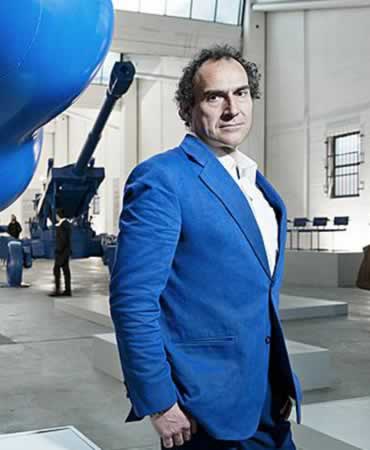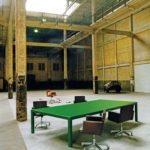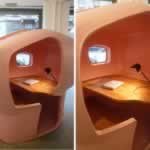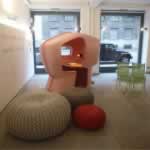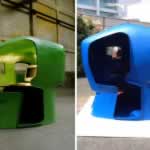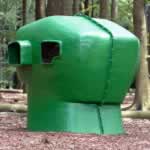Atelier Van Lieshout
Atelier Van Lieshout is the studio founded by the sculptor, painter and visionary Joep van Lieshout, who, after graduating from the Rotterdam Art Academy, quickly became famous with projects that oscillate between the world of design and that of art: sculpture and installations, buildings and furniture, utopias and dystopias. In 1995, Van Lieshout founded his studio and since then he has worked exclusively with the name of the studio, which includes more than twenty collaborators of different origins and backgrounds. They all work together in a large shed on the port of Rotterdam, divided into several departments: fiberglass, wood sculpture, metal. The designers are closely involved in the manufacturing process of each product; for this reason, the design and production of all the works signed by AVL must necessarily take place in this single place.
Over the past three decades, Van Lieshout has established a multidisciplinary practice that produces works on the borders between art, design and architecture, studying the fine line between manufacturing art and functional mass production objects and trying to find the borders between fantasy and function, between fertility and destruction.
Van Lieshout analyzes systems, be it society as a whole or the human body; he experiments, looks for alternatives, holds exhibitions such as experiments for recycling and even declared an independent state in the port of Rotterdam AVL-Ville in 2001: a free state in the port of Rotterdam, with a minimum of rules, a maximum of freedom and the higher degree of autarky.
All these activities are carried out in the typical provocative style of Van Lieshout, be it political or material, combining imaginative aesthetics and ethics with a great entrepreneurial spirit; his work motivated the movements in the field of architecture and ecology and was celebrated, exhibited and published internationally. His works share a series of recurring themes, motives and obsessions: systems, power, autarchy, life, sex and death – each of these traces the human individual in front of a larger whole like his well-known work Domestikator (2015) . This sculpture aroused controversy before it was even placed in the Louvre in the Jardin de Tuilleries, but was later adopted by the Center Pompidou where it was exhibited during the 2017 FiAC.
